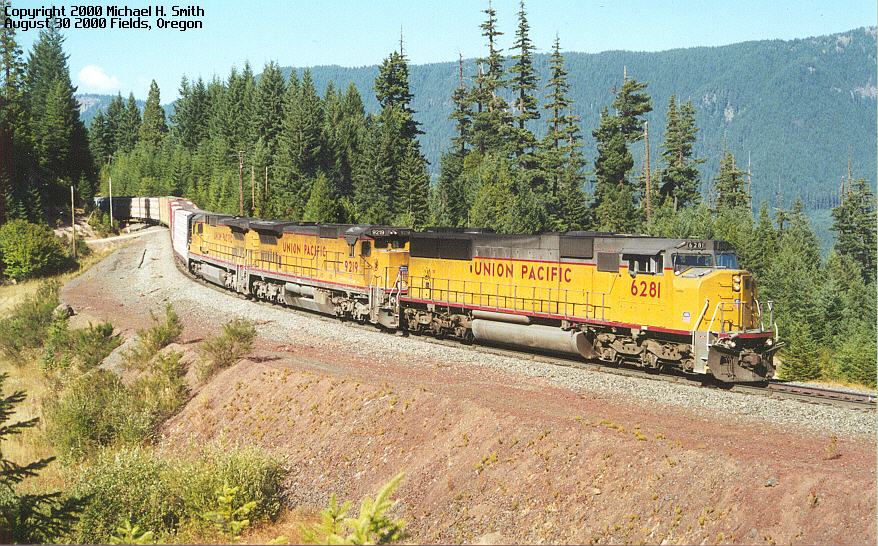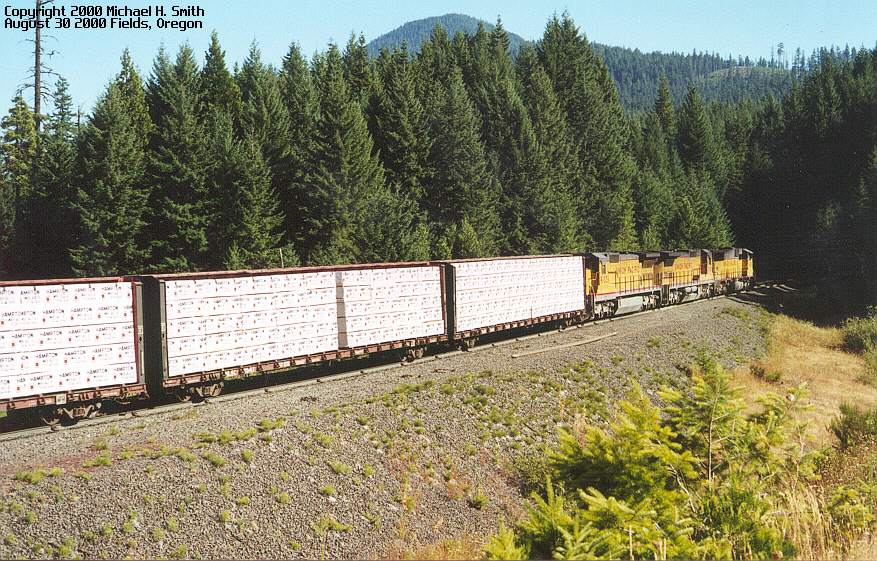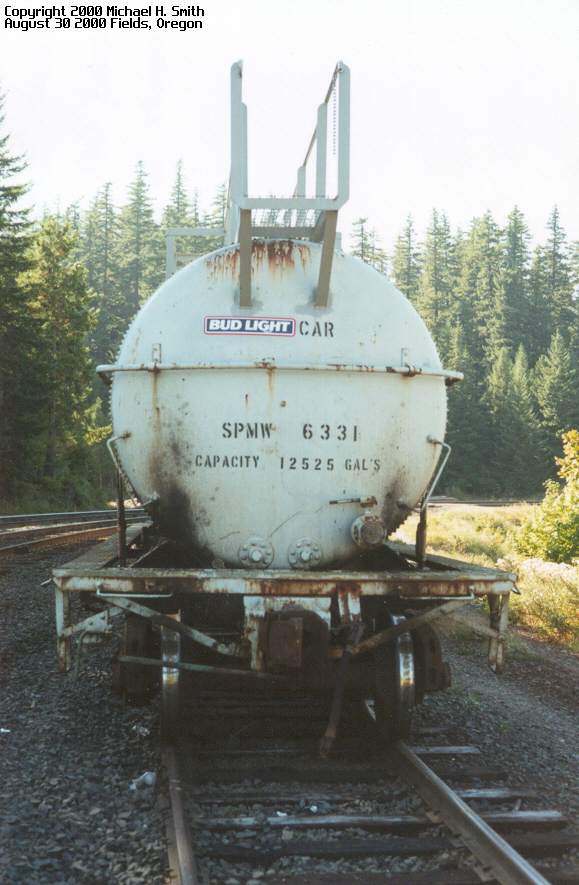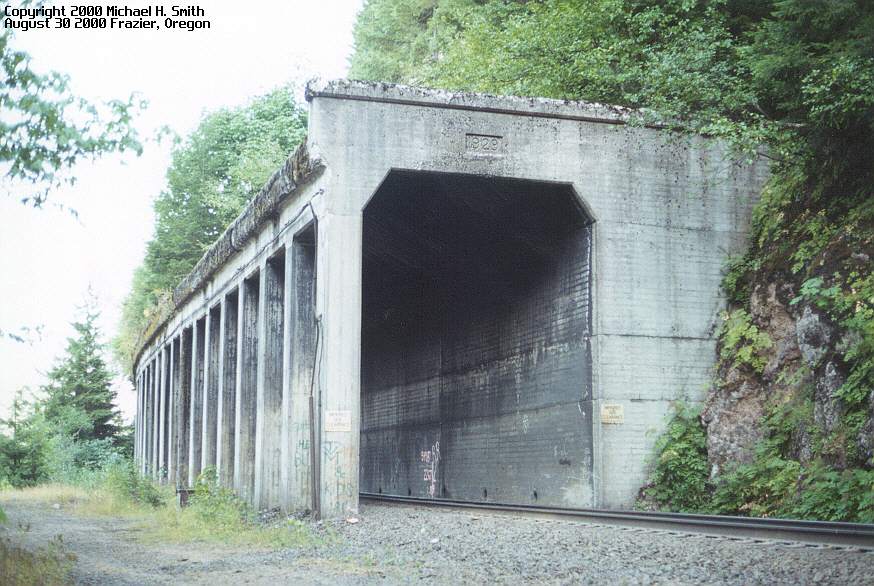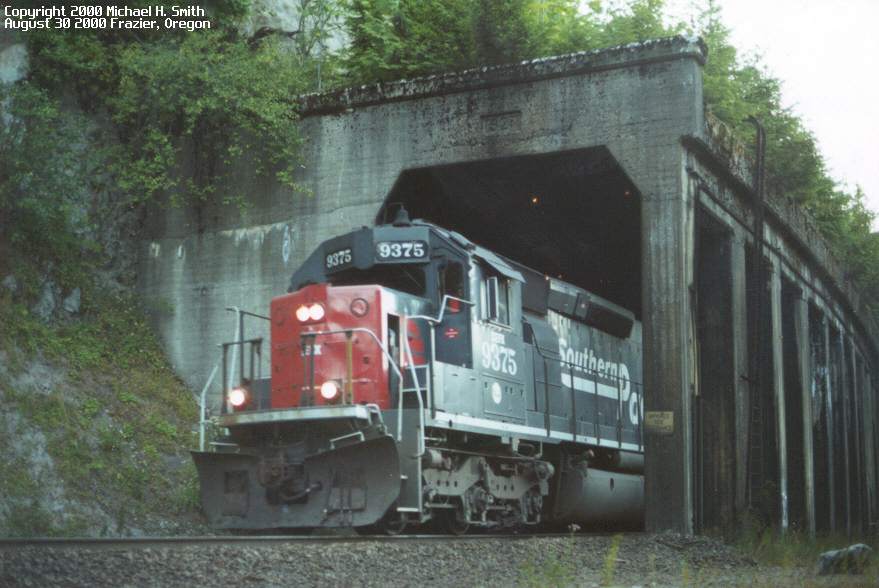I made my August trip before I had come up with this idea of taking one trip a month and posting everything that happened on my website. It was kind of a last-minute idea, I just decided on Tuesday night that I would get up early and head up “The Hill.”
The Cascade Line runs geographically southwest out of Eugene, Oregon roughly paralleling Highway 58 up into the Cascades. After crossing over the summit, the track turns south and heads for Klamath Falls. The line is the only major north-south route between California and Oregon. Trains headed north are referred to by UP as “eastward” and trains headed south are “westward.” I refer to trains as either going northbound or southbound.
Wednesday (August 30) I got up early and packed everything that I would need for my trip. I was already learning an important lesson – pack the night before! I spent an extra hour in the morning getting stuff together. That’s an hour of daylight lost.
I spotted my first train of the day at Dougren, a siding not too far out of Eugene. It was a northbound train, and I knew that there would be no way for me to catch it without going all the way back to Eugene. I let it go, but I was encouraged by the fact that I had already seen a train.
Highway 58 follows the Willamette River into the mountains, and along the way there are two reservoirs. The track lies between the water and the highway along the upper reservoir (Lookout Point Reservoir), and I knew that I wanted a picture of a train with the water in the background.
There are a few places with a cliff on the opposite side of the road from the tracks, and I knew that climbing one of those cliffs would be the only way to make the water visible behind the train. I parked my car and started walking along the bottom of the cliff, looking for a good place to climb up. While I was looking, a northbound intermodal train came by. I got an okay picture of it, but it wasn’t the overhead shot I wanted. After it passed, I continued working on the cliff.
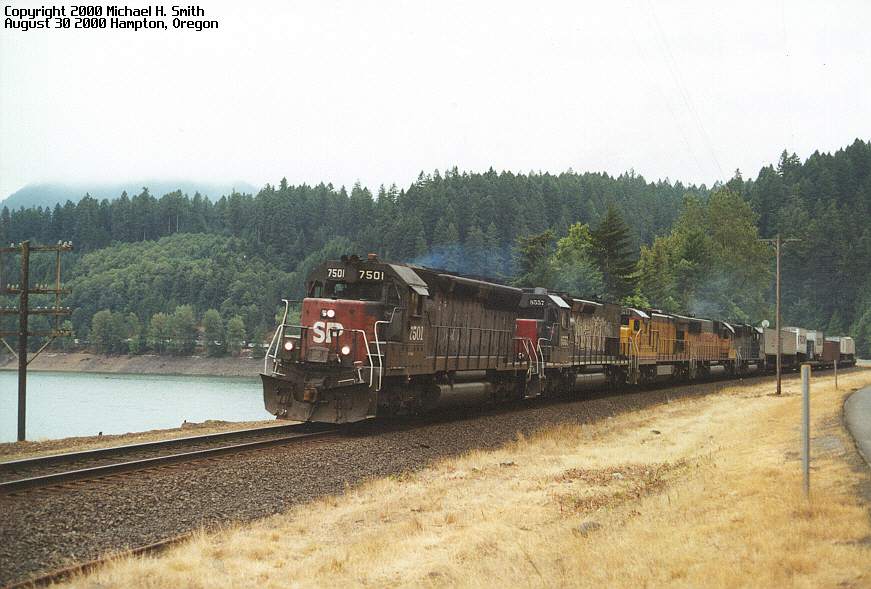
I was hoping for another northbound because the train would have disappeared out of the shot to the right, and then come back in up above in the distance. A southbound train would have looked good, but not quite as cool as a northbound.
I ended up staying on that ledge for a little over an hour, and while I was waiting I realized something that I would do differently on my next trip – bring some reading material! There would be a lot of boring down time waiting for a train to roll into my shot that day. Finally I heard a hotbox detector go off on my scanner. I wasn’t familiar with my mileposts at the time, so I didn’t know for sure which way the train would come from. After a couple minutes I could hear the train coming up from the north. The result is September’s Image of the Month.
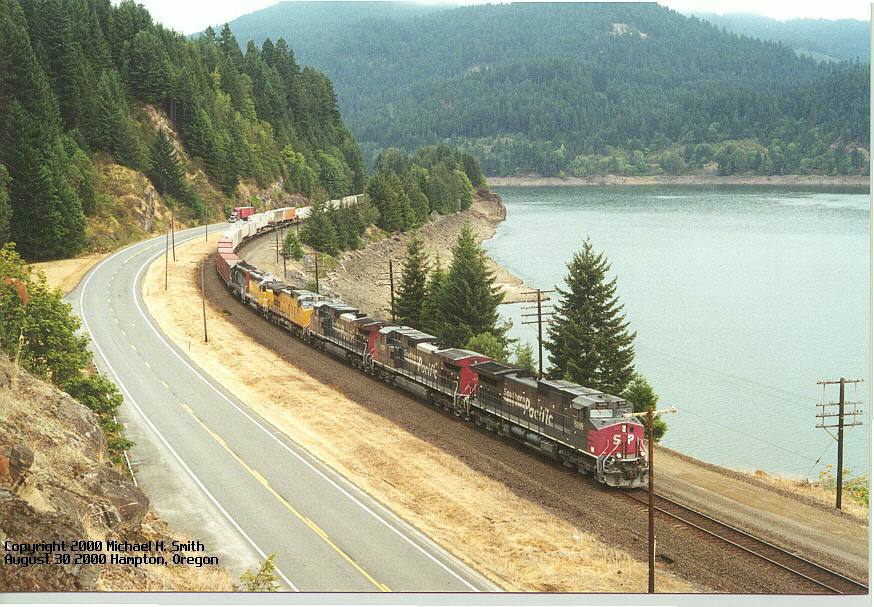
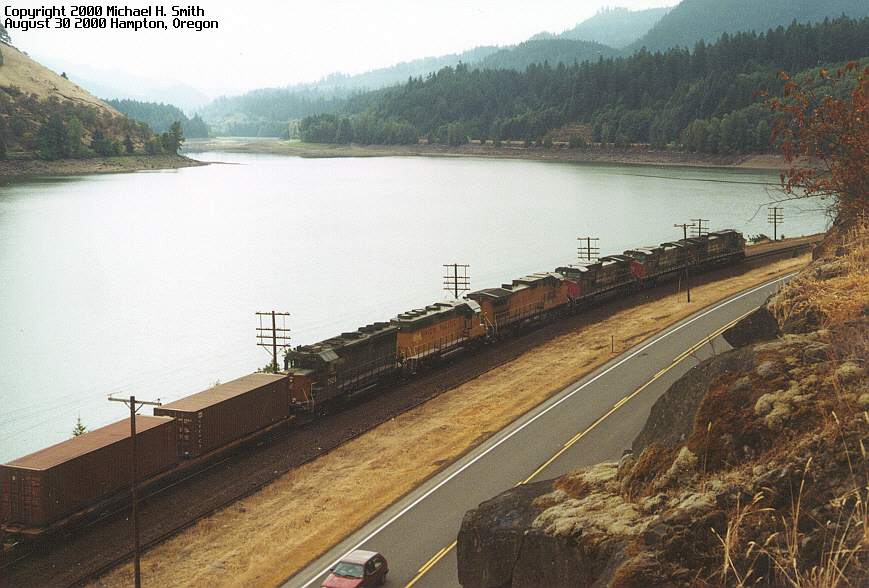
My next stop was Tunnel 23. I’m not sure of the exact date, but several years ago SP discovered that T23 was caving in. They dug out the hill next to the tunnel and moved about 400 yards of mainline to go around the tunnel. Diagonal bracing was added inside the tunnel to keep it from completely caving in, and drainage pipes were placed to make sure that water didn’t further erode the insides of the tunnel. The result is two unused tunnel portals that make excellent places to take pictures from.
The sun was to the south and slightly to the east, so I positioned myself on the north portal hoping for a southbound train. After about half an hour of waiting, I heard on the scanner that the northbound Coast Starlight was on time. It would be passing me in about 20 minutes. Right before the Starlight got to me, I heard on the scanner a southbound train enter the siding just downhill (Lookout) to hold for Amtrak. I got a picture of Amtrak going away from me, and as soon as it was clear I got a picture of the southbound freight coming toward me. By the time I got the shot of the freight, the sun had moved directly in front of it. The lighting I ended up with wasn’t exactly flattering the engines, and it turned out to be just an okay shot. Not as good as I’d hoped.
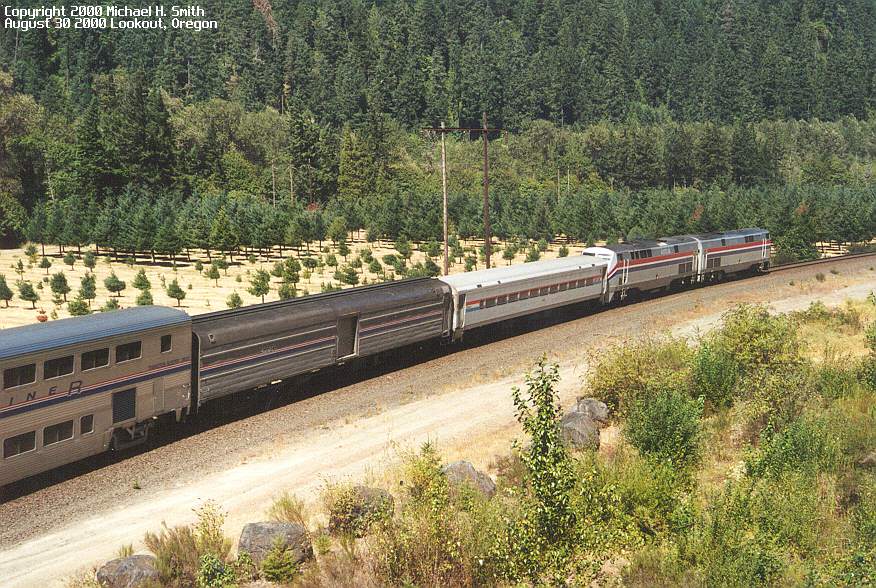
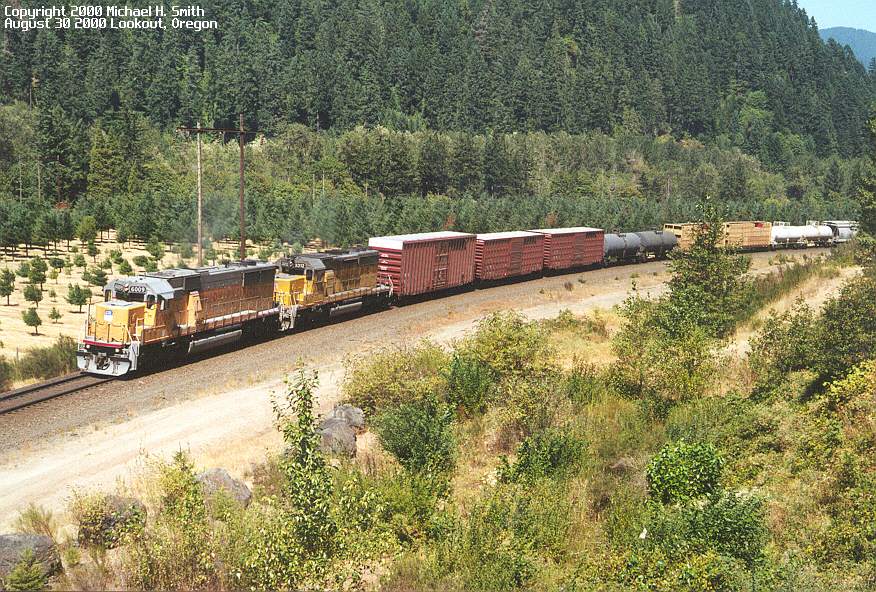
I left Oakridge and headed up Hwy. 58, not really knowing where I would stop next. I had a guide to the line that I had printed off the internet (Joel’s SP in the Cascades), and decided to go up to the slide area.
The slide area is a spot along the line that the ground is slowly shifting downhill. SP filled the area with cinder and restricted the speed there to 25 m.p.h. The ground has remained stable since then, but the speed limit remains. Last winter I sat near the slide for three hours waiting for a train to come along. All I ever got was a stupid helper set. This time I waited in the exact same spot hoping I would have better luck. I still waited two and a half hours this time, but I finally got the train I wanted. It was a northbound manifest led by an SD60M, and it was beautiful (despite being painted in Armour Yellow).
